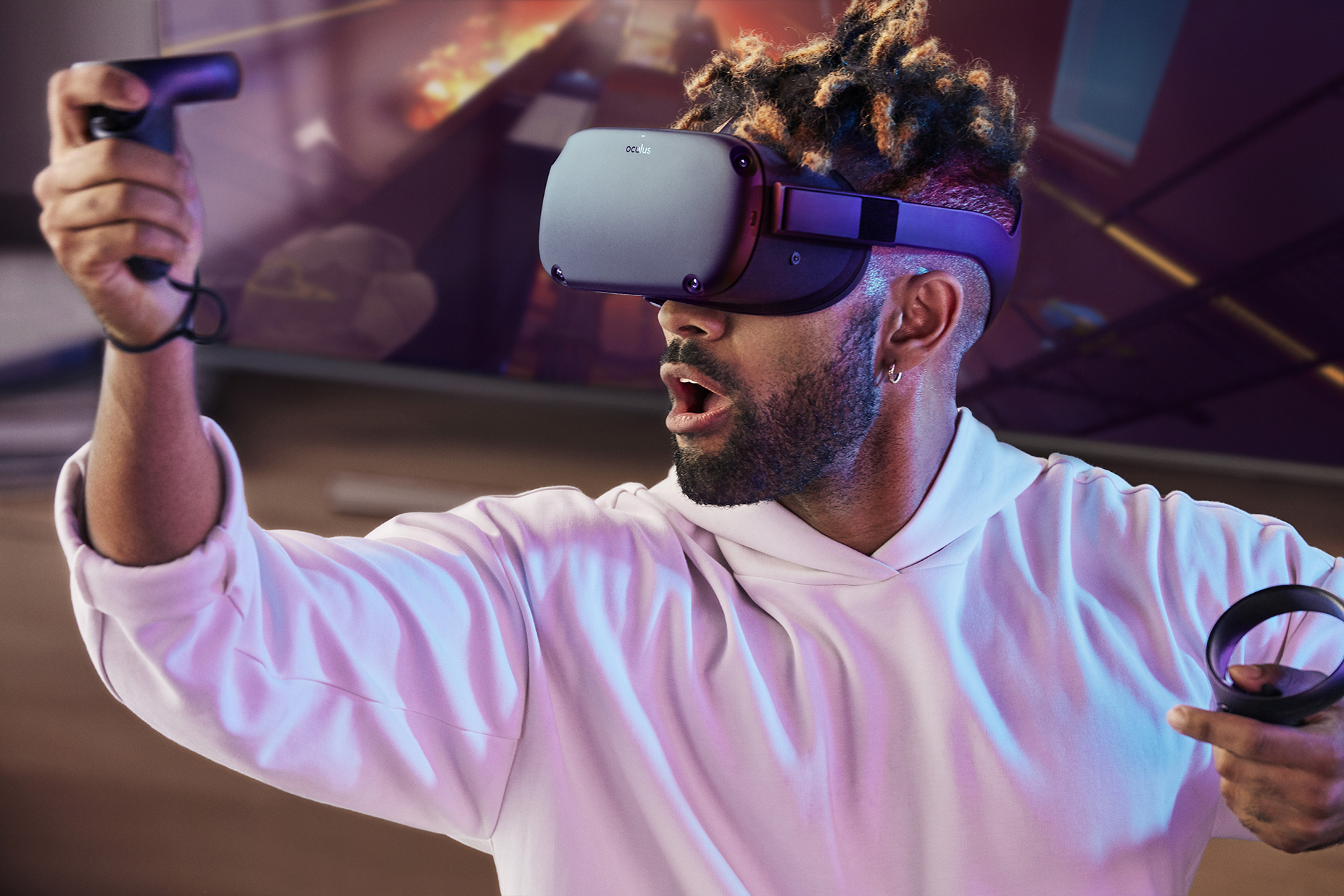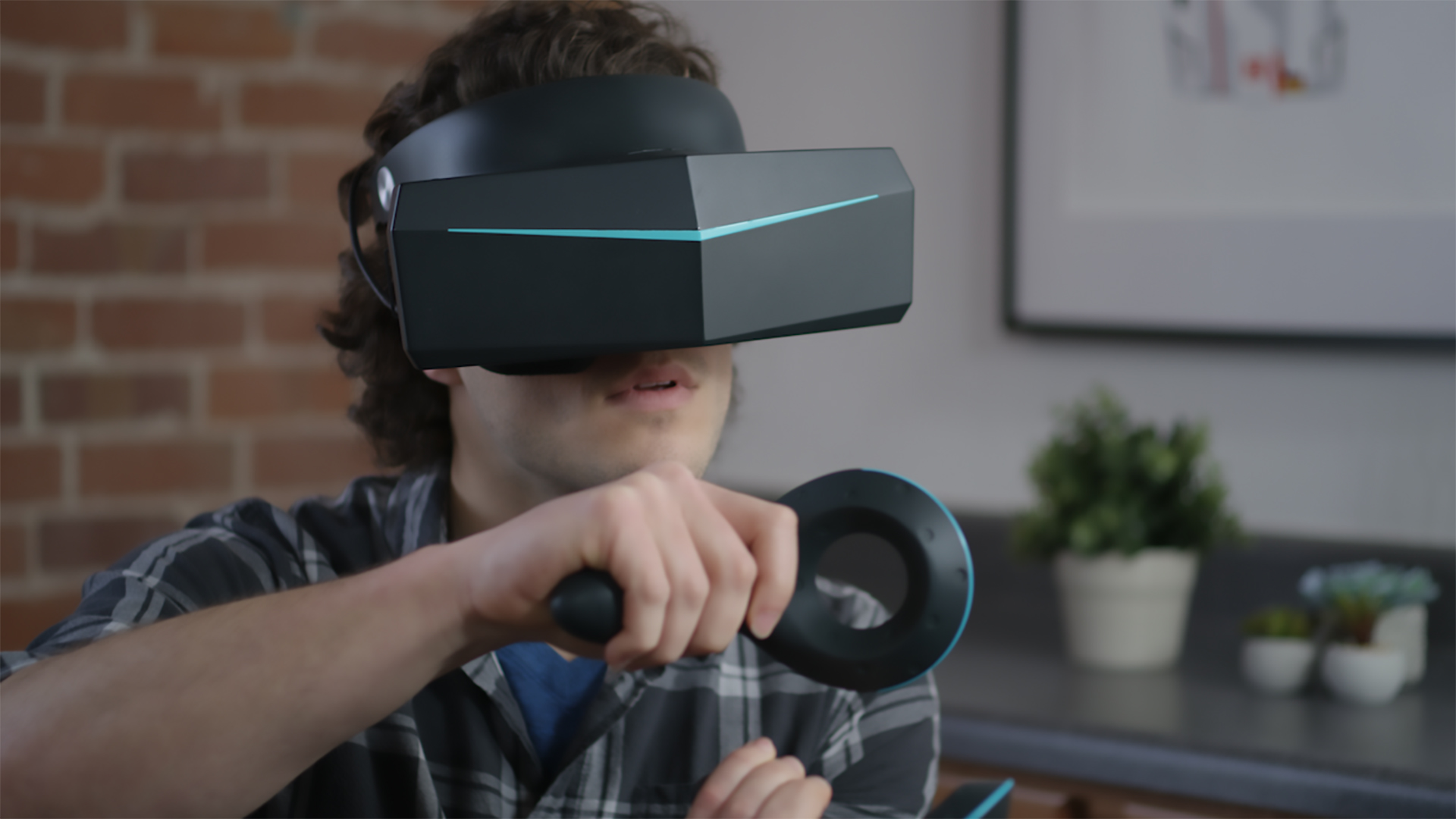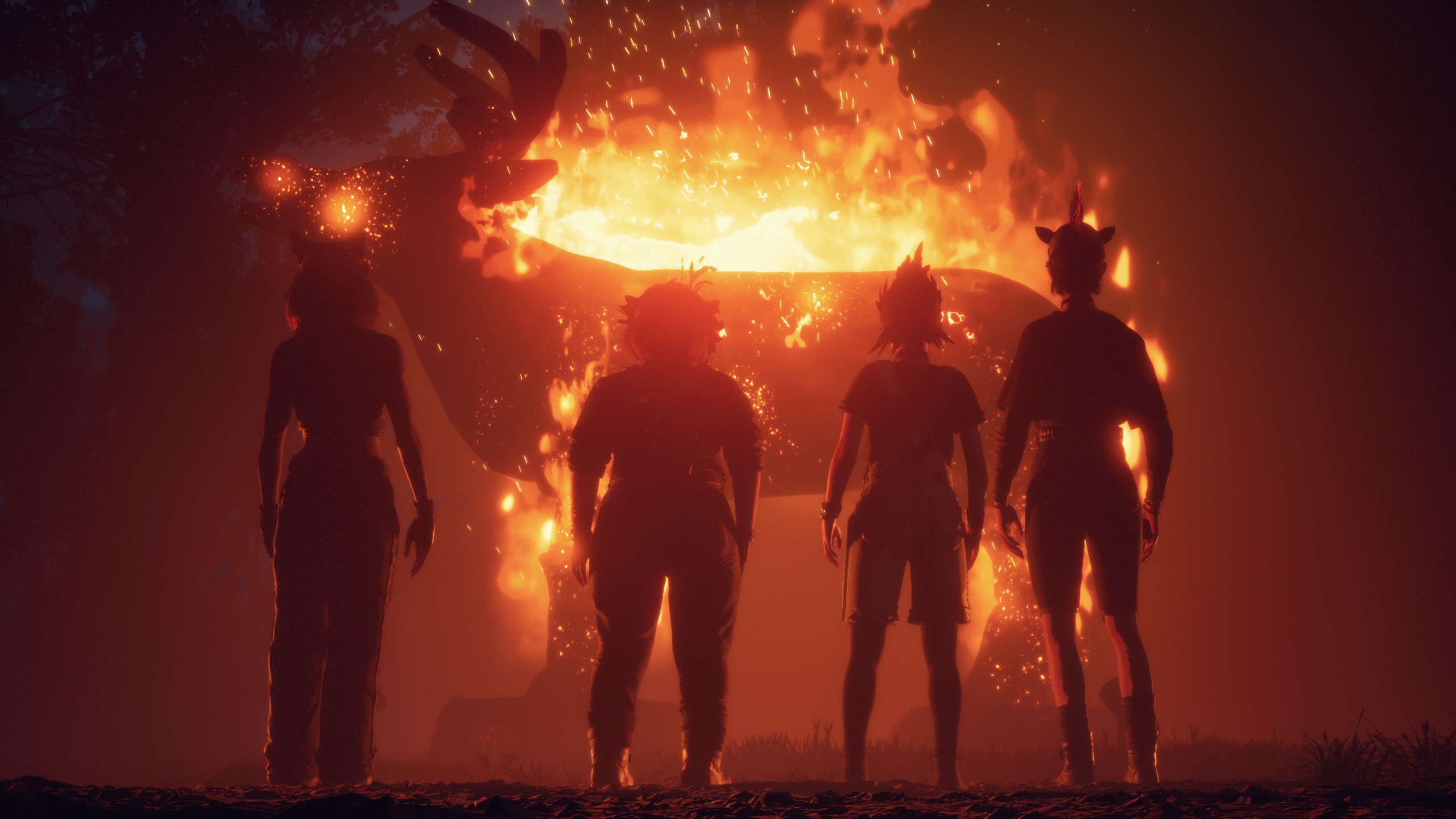What to expect from VR in 2019
As the technology matures and the price continues to drop, VR is going to be more accessible in 2019.

Every year, virtual reality technology gets a tiny step closer to that Star Trek Holodeck dream, and 2018 was no exception. With the release of the affordable Oculus Go and the ultra high-end Vive Pro—along with countless other contenders for the best gaming headset crown—this year saw VR tech make promising strides towards being a system that anyone would want to own. But what's in store for 2019?
Oculus' ambitious new headset the Quest will meld the portability of mobile hardware with most of the tracking accuracy of high-end PC VR, an important step towards VR really breaking into the mainstream. Prices will likely keep coming down, and there are some big, exciting VR games coming that do things that just wouldn't be the same outside of virtual reality. Here's what to expect from VR in 2019.
The Oculus Quest could make VR go mainstream
The spring of 2019 could be a pivotal moment for VR if Facebook can really deliver on the promises fuelling its new standalone headset, the Oculus Quest. Unlike the Rift, the Quest won't need a powerful PC, but its features far exceed anything we've seen from a portable headset to date. Namely, the Oculus Quest sports 6DOF room-scale tracking over the Go's 3DOF. That means the Quest will not only track you while you tilt and rotate your head, but can also detect you moving your head forward, back, up, and down—exactly the same way the Rift does.
Well, not exactly the same way. The Quest also sports brand new inside-out tracking built into the headset to follow your movement around a room. You won't have to place IR sensors in your play space because the Quest has built in cameras that map the room and track your movement through it. It's impressive sounding stuff made even more so because the Quest also comes packaged with two fully tracked motion controllers. It's essentially the entire Rift experience without having to shelve out for a PC. But that lack of a dedicated GPU will have its drawbacks: Powered by the same CPU found in the Samsung Galaxy S8, the Quest will still meet acceptable minimum standards for fidelity and performance but it won't compare to a proper PC-powered VR setup. Crucially, though, many games already available on the Rift will run on the Quest, too.
Considering that the Quest will ship for $400 (the same price as the Rift currently), that's still the most enticing offer on a fully featured headset. Ever. If VR gaming has needed a champion to help it break out into the mainstream, the Oculus Quest is the best candidate by far—a close to perfect intersection of price, features, and accessibility that makes a strong argument for finally jumping into VR. We'll have to wait until the Oculus Quest ships in spring of 2019 to know for sure, though.
Playstation VR will continue to be the best for exclusive games...
PSVR is far from the best headset on the market but it does have two things going for it: A cheap price tag and a manufacturer hungry to secure exclusives anywhere it can. Requiring only a PS4 to use, PSVR is one of the most accessible ways to get into VR and Sony has sweetened the deal with one of the best library of games out there. With hit exclusives like Tetris Effect, Astro Bot: Rescue Bot, Borderlands 2 VR, and Resident Evil 7, there's a lot to love about the PSVR library that you can't find anywhere else.
That probably won't change any time soon, either. PSVR continues to succeed on the back of Sony's aggressive pursuit of exclusives. In 2019 and beyond, over 50 games are in development for PSVR along with several exclusives like Ace Combat 7: Skies Unknown and Everybody's Golf, and Media Molecule's Dreams.
The biggest gaming news, reviews and hardware deals
Keep up to date with the most important stories and the best deals, as picked by the PC Gamer team.
...But VR still won't find its killer app
There's a long held belief that new systems are sold on the back of a killer app, that one invaluable game that's so damn good you'll happily pay whatever it takes just to play it. For something like the Nintendo Switch, that's Mario Odyssey or Breath of the Wild, but so far VR just hasn't found that one platform-defining experience. There's still loads of amazing games to play, like Beat Saber, but nothing that really matches the scale and scope of the top-tier games we play outside of VR.
Looking ahead to 2019, the most promising contender is Insomniac Games' Stormland, an FPS adventure game that Wes loved when he first played a demo back in September. Insomniac Games is best known for beloved series like Ratchet and Clank, Spyro, and the PS4's excellent Spider-Man, and Stormland draws little bits of inspiration from each as you explore randomly-assembled islands shooting up enemy robots and salvaging their parts to enhance your own abilities. You can also glide around like Superman. Stormland looks gorgeous and fun, and its big world and optional co-op could make this the first VR game worth buying a Rift for.
Eye tracking will be a big new feature in many 2019 headsets
Companies like Tobii have been making eye-tracking hardware for a long time now, but 2019 will see many VR headsets incorporate the tech to help improve performance and add some cool new features as well. Using a clever trick called "foveated rendering" that mimics how our eyes naturally work, headsets can track our eyes to see what we're looking at in a virtual space and, just like in real life, render that specific area in the highest possible detail while everything in our peripheral vision is rendered in lower detail to improve performance. Foveated rendering can actually be done in VR already, but it'll be more powerful with eye tracking.
Companies like Qualcomm are using Tobii's tech in their new prototypes while others are developing their own solutions that already show a lot of promise, like Oculus' cool 140 degree field of view (FOV) headset prototype. But eye tracking has a lot of more technical uses beyond boosting performance. When used in varifocal displays, for example, eye tracking helps VR headsets better simulate changes in focus and depth of field effects, creating a much more realistic virtual space where objects don't blur unnaturally when they're too close to you. Eye tracking can even improve social interactions in virtual space because your character's eyes will mimic the movements of your own, which makes character avatars feel less doll-like.

VR will cut the cord but still improve on display tech
When VR made its first big push into pop culture, the biggest problem was that headsets cost too much and offered an experience with too many drawbacks. The lower resolution combined with limited FOV and the general discomfort of wearing a clunky headset connected to your PC by a cable made VR a hard sell in that first generation. But things are rapidly improving and 2019 has a lot of promise.
With Oculus Quest leading the charge, headsets are moving toward being standalone and wireless, which makes them more accessible for people who don't want to shell out for a gaming PC just to play. Even high-powered headsets like the Vive are going wireless thanks to wireless adapters—though getting one will cost you. In addition to the previously mentioned inside-out tracking used in the Oculus Quest, 2019 headsets will let you use room-scale VR without having to worry about where to place a bunch of unsightly IR sensors.
In terms of resolution, manufacturers are racing to improve pixel density and FOV across the board, like Google and LGs promising 4800 x 3840, 1443 pixels per inch display which will provide a much cleaner image without noticeable aliasing. Other companies are taking things even further, like Kickstarter success Pimax with their 8K headset. Of course, that kind of hardware will come at an exorbitant cost and will be punishing on performance. Don't be surprised if headsets at those kinds of resolutions remain impractical for some time. Still, the technology is advancing. Across the board, VR is moving towards being more powerful, while still being much more affordable than the Oculus Rift and HTC Vive were at launch just a couple years ago.
With over 7 years of experience with in-depth feature reporting, Steven's mission is to chronicle the fascinating ways that games intersect our lives. Whether it's colossal in-game wars in an MMO, or long-haul truckers who turn to games to protect them from the loneliness of the open road, Steven tries to unearth PC gaming's greatest untold stories. His love of PC gaming started extremely early. Without money to spend, he spent an entire day watching the progress bar on a 25mb download of the Heroes of Might and Magic 2 demo that he then played for at least a hundred hours. It was a good demo.



